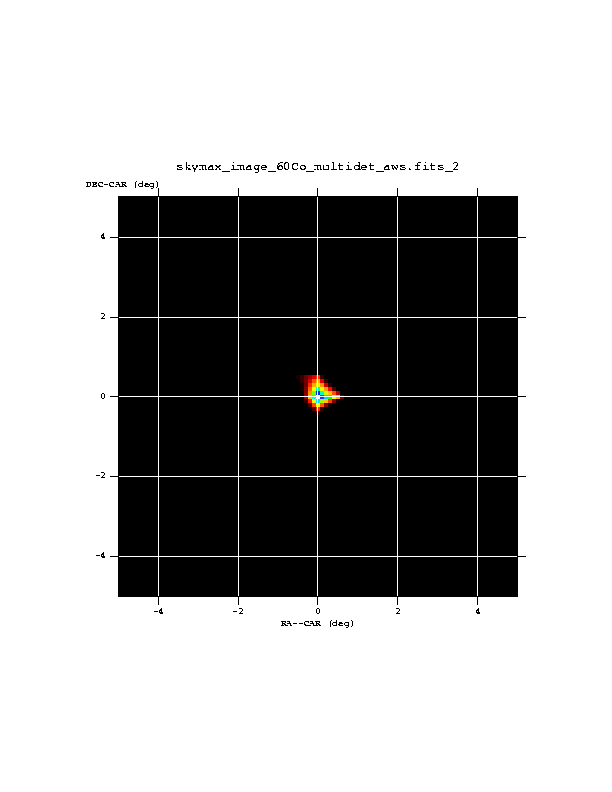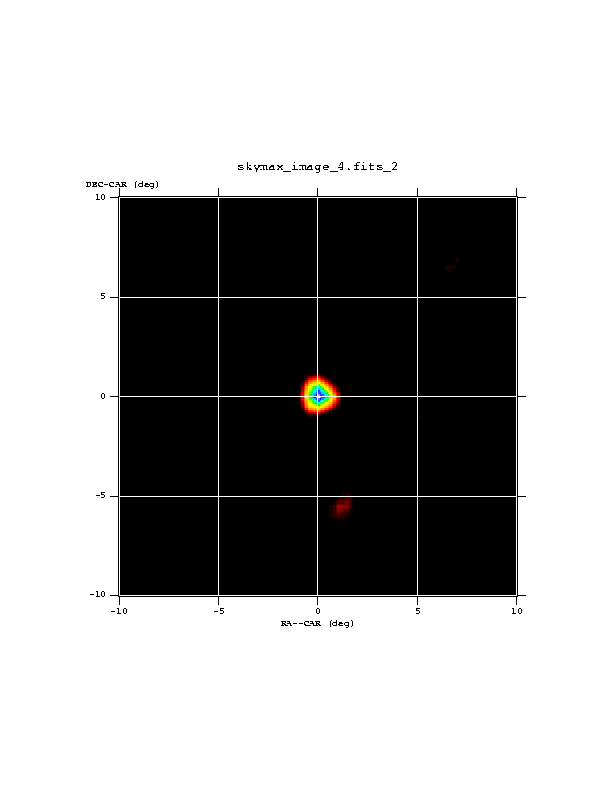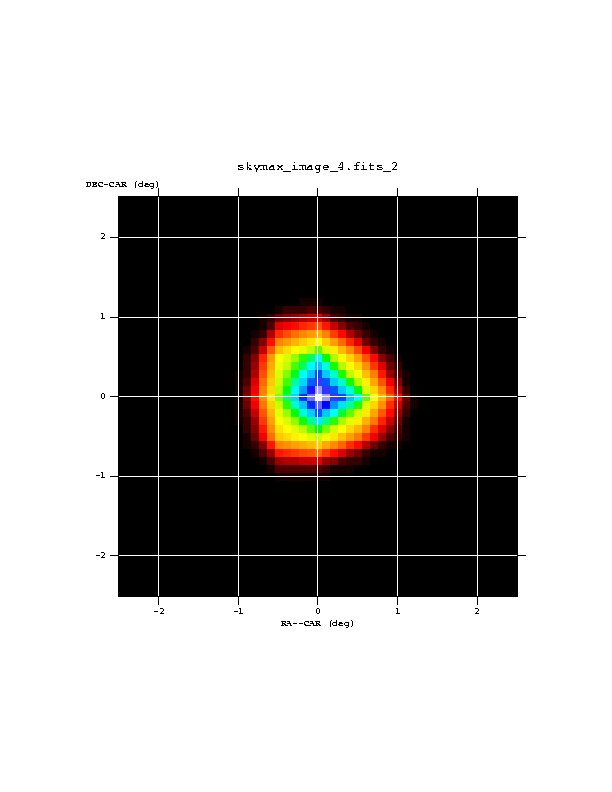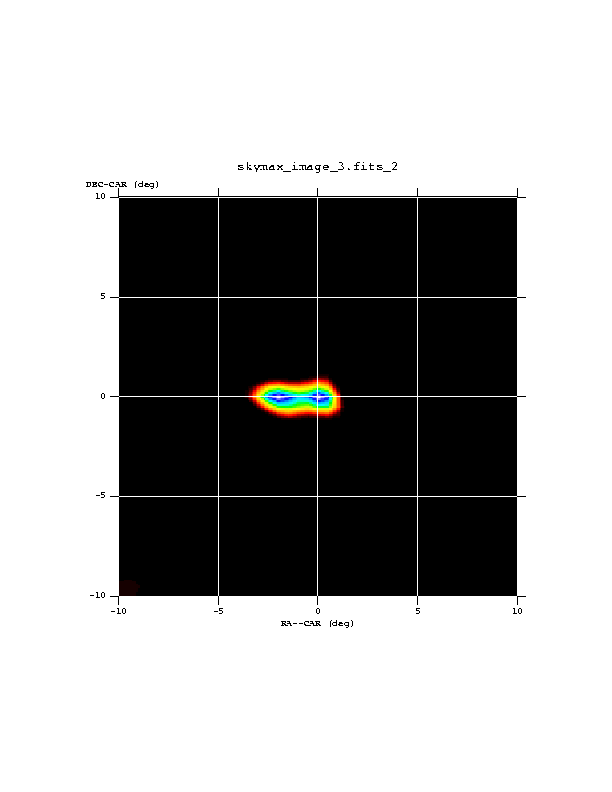
This is an informal page to give some information on current analysis activity of Bruyeres-le-Chatel data at MPE, in particular for ISDAG internal work. I maintain also a more externally orientated site.
All results are obtained using data and software installed at ISDC. Started 1 June 2001, last updated 26 Sept 2001. The most recent results are in the 24 Sept ISDAG presentation.
Multidetector first light
For the first time it has been possible to generate a
spiskymax image
using multiple detectors; this image uses the 19 single detectors plus 66 double and triple combinations ("pseudo'detectors"). The response functions (IRFs) were provided by Chris Schrader from GSFC. The source is 60Co 1173 keV at 125m, one pointing (BLC log 31).

An improved multidetector spiskymax image is obtained using 11 observations (BLC log 31-41) from 0 to 10 degrees.
More interesting is to use multiples only, and this has now been done... here is an 1173 keV
spiskymax image for run 31 using doubles+triples only (new July 6 2001)


Angular resolution
By combining several 60Co pointings in an appropriate way it is possible to emulate a "dithering" observation of 2 sources separated by 2 degrees.
A new executable spisumhist was developed to allow easy combination of pointings for such complex cases.
This spiskymax image uses 5 pointings at 0,2,4,6,8 degrees (synthesized using spisumhist from BLC log 31,37-41), single detector events.
The sources are clearly resolved without artefacts, showing that SPI resolution is better than 2 degrees.
This result is much better than when only a single observation is using, showing the advantage of dithering.
Unfortunately there are only a few cases of this kind for which BLC data are appropriate. For the 2 degree case it happens to be possible.

Response IRF evaluation
For 60Co run 31 (on-axis) I made a comparison of expected counts with observed predicted using spiskycnv and the reconstructed image (which is effectively a point-source on axis).
BLC data are blue squares, predicted is red crosses.
The effect of the masking of the central hole [seen by detector 0] by additional material seems to be visible.
The agreement with the other detectors is also not perfect: this is
presumably due to the different detector efficiencies and the current IRFs.
A similar comparison for source at 2 degrees (run 37) gives an idea of the level of agreement of the response with the data at the present state of the art.
spihist PSD tests
spihist has been tried with multidetfile.txt having detectors 0-18
as PSD ie 1100, 1101 etc. However the output events file is zero.
The raw events have PSD=1 mostly and psdtype="raw" was specified in spihist,
so it should work, so something is wrong. psdtype="cor" is the only other option accepted (not "corr" or "prp" as specified in spihist documentation and spihist.par respectively) but this also gives zero events even when all the PSD flags are set to 1 in the input corrected events file. SPRs on spihist have been raised.
Technical
The datasets can be found at ISDC in the standard organization under ~strong/BLC/data_rep/obs e.g. if someone wants to apply other methods to the above cases. In particular
aws_60Co_multidet_blc31 : multidetector,singles+doubles+triples,run 31 (on-axis pointing)
aws_60Co_multidet_blc31-41 : multidetector,singles+doubles+triples, runs 31-41 (11 pointings)
aws_60Co_puremultidet_blc31 : doubles+triples ONLY, run 31 NEW 6 Jul 2001
aws_60Co_blc_multisource2 : 2 degree source separation, 5 synthetic pointings
aws_60Co_psd_blc31 : PSD events, run 31 (on-axis pointing)
spisumhist Version 2 is available at ISDC ~strong/deliveries/ (has not yet been formally delivered)